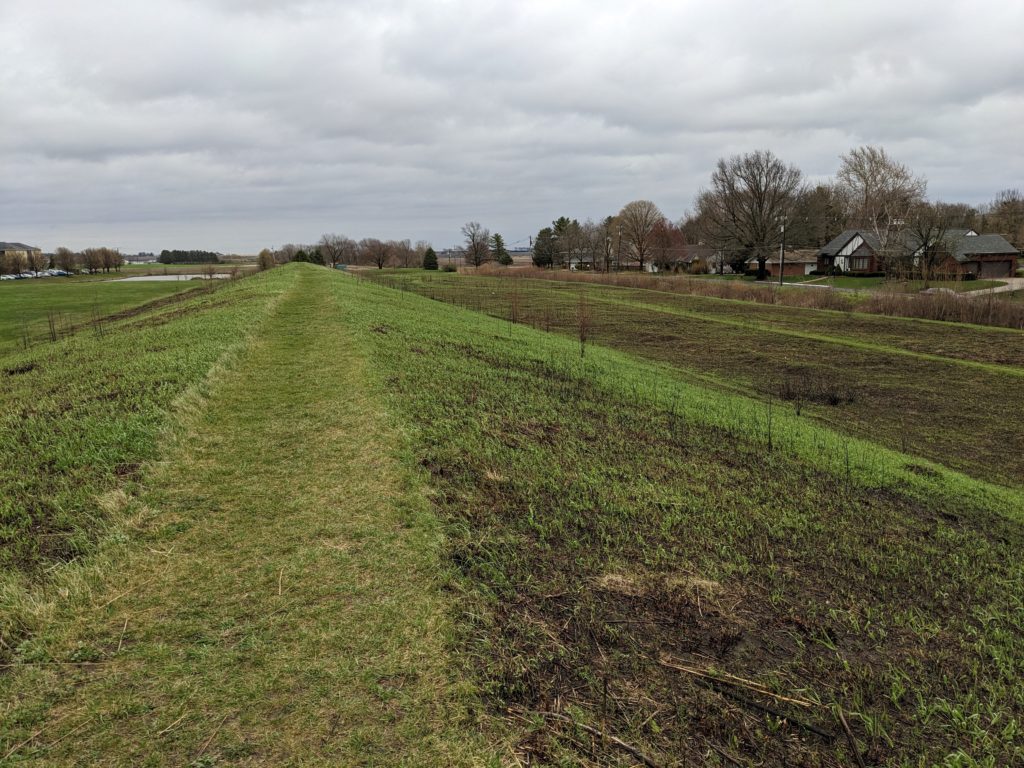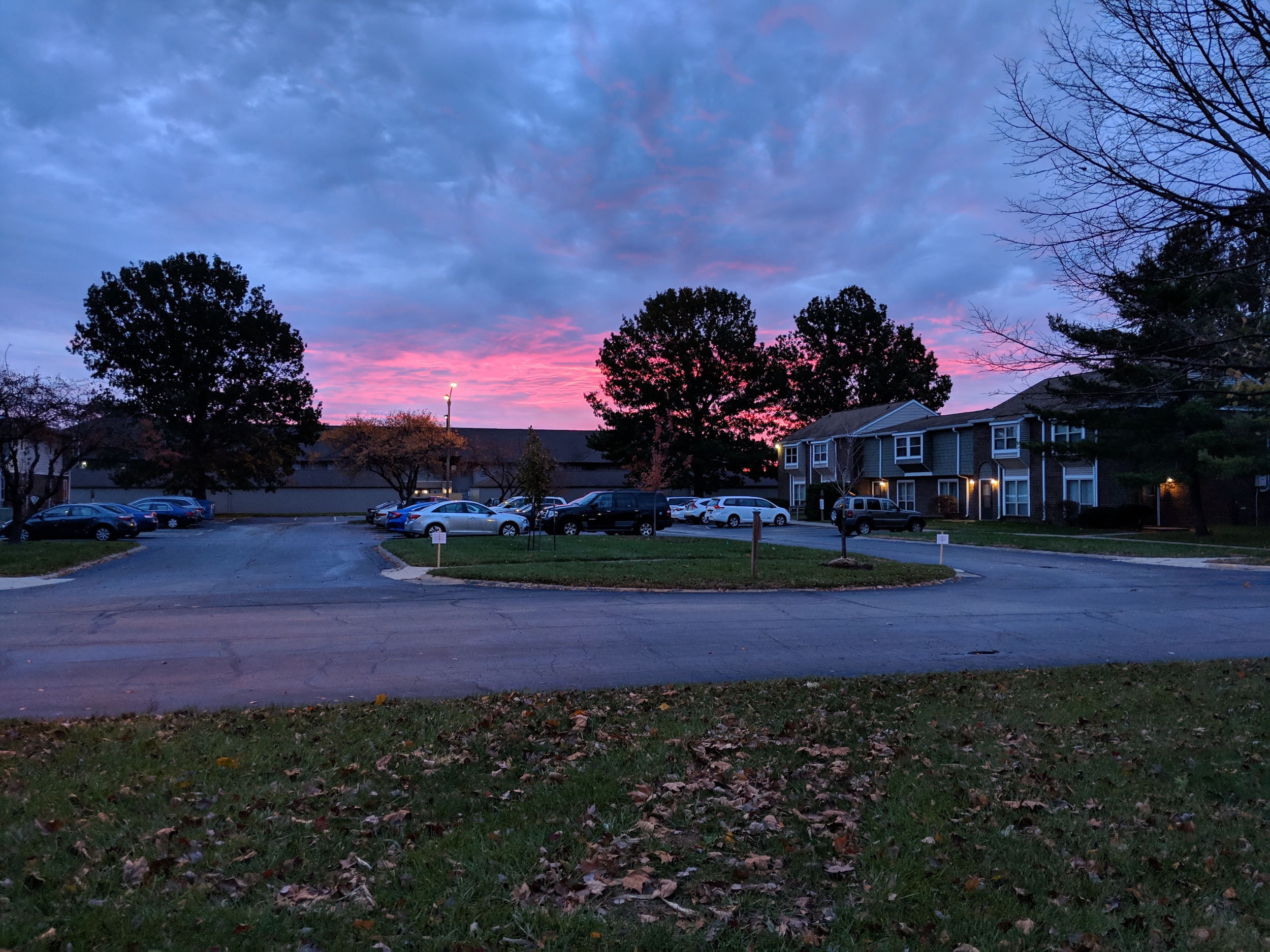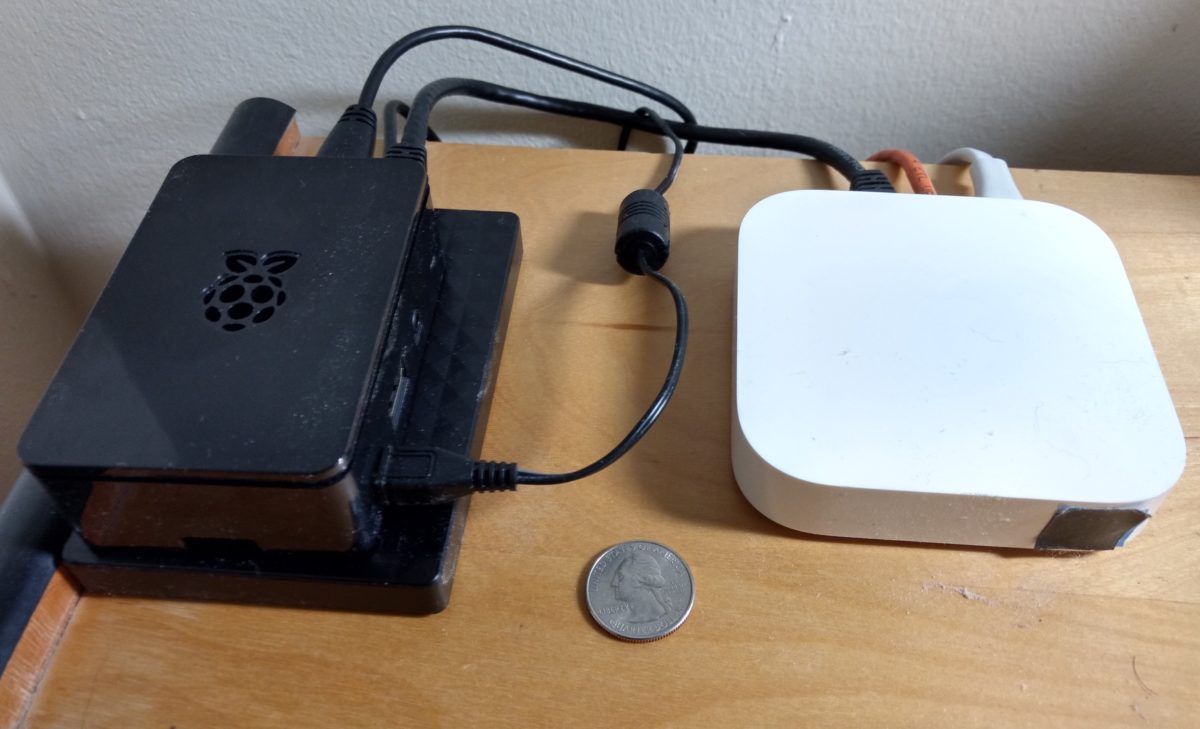Prairie grass is growing like a weed where they did the burn a couple of weeks ago.
It’s not visible in the picture, but I saw a Yellow-shafted Flicker fly up ahead of me. They’re showy birds, always fun to see.


Prairie grass is growing like a weed where they did the burn a couple of weeks ago.
It’s not visible in the picture, but I saw a Yellow-shafted Flicker fly up ahead of me. They’re showy birds, always fun to see.

I wasn’t huge fan of the Creative Commons until shortly after I started writing for Wise Bread.
For illustrating Wise Bread posts I liked to take my own photos, but for some things I wanted an image that I couldn’t easily take myself. For those things I used Flickr’s powerful search facility and deep pool of licensed photos.
Because I was using photos for a commercial purpose (to illustrate articles posted to a personal finance site that was heavily monetized so they could pay their writers), I avoided photos that were not licensed for commercial use. And because I and the site were retaining rights to the posts, I avoided photos with a “share alike” license.
I quickly came to love the fact that there was this vast library of images generously donated by their creators, and quickly felt that I owed it to them, and the world in general, to share my images on the same terms.
After the new owners of Flickr broke everything that was great about the site, I started hosting my photos myself at images.philipbrewer.net, using an open-source tool called Lychee. And shortly after I started using it, Lychee added the facility to mark photos as creative commons licensed.
Nearly all of my photos are licensed CC-BY, which allows anyone to use, remix, and share those photos, provided they provide attribution to me. (Ideally mention my name and link back to my blog, to my images site, or to the photo itself—whatever makes most sense for your use of the image.)

I mention all this primarily to let people know that those photos are available for use, because finding creative commons licensed images is no longer so easy as just searching at Flickr. Creative Commons has a search facility, but it doesn’t point at the wider web, just at certain “partner platforms.”

Still, if you see one of my photos and want to use it, know that it’s probably licensed with a CC-BY license. (The main exception is photos of family members, which I don’t license. Properly speaking all the license does is grant a license to the copyright for that photo. Any model release needs to be negotiated separately with whoever appears in the photo. But I figure that’s a nuance that many image users just skip over, so to avoid issues with people using photos of me or my family inappropriately, I just don’t license them.)

If a photo is not licensed (and it’s not of me or a family member), that’s probably just an oversight on my part. Let me know and I can almost certainly fix the licensing almost immediately.

I would be delighted if people would start using my photos on my images site the way they used to use my photos of Flickr.
I mentioned a few days ago that I’d got my microblogging working about the way I wanted. There was one exception to that: my “images” workflow.
There’s pretty good “media library” functionality built into WordPress, but I’ve always found it a bit too blog-centric in how it works to be a good general solution to images hosting.
I was a Flickr user from way back, but when the new owners ruined it I decided I should host my own images, and ended up going with Lychee to provide self-hosting functionality.
Lychee works great, but it took me a while to sort out how to integrate images hosted there into my blog.
Here’s what I’ve ended up doing:
Here, for example, is an image I took yesterday:

Pretty much everything works the way I want it to now. The images are hosted on images.philipbrewer.net, I have access to small, medium, and large versions of the images, and an easy-enough way to include them in a blog post.
Two things that could work better:
Still, after a bunch of posts where I was testing things out, in which things didn’t work quite they way I wanted them to, I’ve now got things just about set.
In fact, I’ve gone ahead and set up a Lychee instance at my site. I’ve just started populating it, but there’s a few recent photos there:
https://images.philipbrewer.net/
I’d be very interested to hear if people can see it when they’re not logged in as me….

In a couple of months the new owners of Flickr are going to delete most of my pictures there, if I don’t pay up for a pro account.
That makes me sad. I’ve used Flickr as my main photo-sharing site since 2004. It was arguably the first social media site, and even though its various owners managed to waste its potential over and over again, it was the best photo-sharing site around—better in every way than Instagram, for example.
I haven’t decided what to do yet.
I could share my photos elsewhere.
I’ve been using the Flickr app to auto-upload my photos to Flickr, which has been very convenient—when a photo doesn’t need much editing, I could just share the photo straight from that auto-upload.
There are two other places that already get my photos auto-uploaded: Google Photo, and (via Syncthing) my home server. Neither of those is a perfect choice.
I’m already more dependent on Google than I’m entirely happy about. (I quit trusting them after they broke Google Reader’s sharing functionality, even before they eliminated the tool completely. Even before that I tried to make sure that I’d be ready to go Google-free at any time if necessary.)
My home server is currently behind some overly restrictive firewall rules that keep it from being useful as a sharing site, although that’s supposed to get fixed. Even then it’ll be a single point of failure, rather under-powered machine with the photos on a single consumer-grade hard drive. It’s just not ready to serve as a production photo-sharing machine, even for a single user.
The most obvious place to share photos from is here at philipbrewer.net, because it’s where I share everything else. The downside is that my photos don’t get auto-uploaded here, and I probably don’t want them to be auto-uploaded here. I can manually upload each picture that I want to share and share it, but it’s not nearly as quick or easy a process as sharing something that’s been auto-uploaded to Flickr.
It works okay, though. Here’s a picture I did that with:


A year and a half ago, my brother gave me a Raspberry Pi 3 as a birthday present, suggesting that I should use it to run my own server.
I used to run my own server. A friend who liked to build such things had built it. It had two ethernet ports, one connected to my cable modem and the other connected to my WiFi router, and it was running OpenBSD (then the most secure OS easily available) and was configured to serve as a firewall.
I used it as a server in other ways. I put an extra disk drive (40 GB!) in it where I could store files that I might want to access from elsewhere. (In particular, when I went to Clarion I copied my latest draft of my current story there each evening, in case of catastrophic computer failure.)
It didn’t require much upkeep, but it required more than none—which turned out to be more than I wanted to devote to it. At some point a serious security flaw was discovered in the OpenBSD release I was running. By then most desktop machines had built-in firewalls as did most routers, and I had Time Machine as a backup solution. It seemed safe to give up my server, and easier than updating it.
In the years since then, the use of cloud services has become ubiquitous, to the point that practically everything I do ends up in the cloud—my photos go to both Flickr and Google. I also use Dropbox (where I have Scrivener stash a backup copy of everything I’m writing) and I stash some amount of my music at both Google and at Amazon.
That’s all great—those services are well backed-up, and the servers are very likely running the latest security patches—but I really like the idea of having my own data on my own machines. But I want that without giving up the advantages of having my data in the cloud. Hence wanting to have my own server.
All that as prequel to my brother coming to visit this past week, and helping me get my Raspberry Pi server up and running.
Once the basic install of Raspbian was up and running, I went ahead and ordered a bit of hardware for it. I got a short ethernet cable to connect it to my router, so that it doesn’t have to do WiFi for basic connectivity (although WiFi and Bluetooth are built in). I also got a slightly more powerful USB power supply for it, mainly because I also got a portable USB hard drive that takes its power from the USB port, meaning that the power needs to be available to the Raspberry Pi. Finally, I got a case for it, so that I don’t just have a naked circuit board sitting on my dresser.
This time the hard drive is 1 TB rather than 40 GB.
For cloud functionality I’m following my brother’s example and running syncthing, which has the advantage of being able to handle being behind a NAT and not having a port exposed to the outside world. I’m running it on my Android phone as well and sharing my photos with a third place: my server. The server then shares them with my desktop machine, so they’re available to use. (That’s how I got the photo above: Taken with the phone and then transferred to the desktop within about a minute.)
I’m still sorting out my sharing strategy. I don’t want to share my whole Music folder with my phone, because it would use all the space there. (I’ll probably end up making a folder with an “essential subset” of my music to share with the phone.) I don’t think I want to share my whole Documents folder on my desktop machine, but I’m not sure yet. For the time being I’m sharing a folder I call “Active writing” with the files I’m currently working on, on the desktop, the server, and my laptop. That way they’ll be available wherever I want to work on them.
Other things are tougher. I’d like to have my own calendar server, but that doesn’t seem easy. I should go back to my post on the google-free option and see what else I was thinking about that I might now be able to implement.
For now, though, I’m pretty happy.
My previous server was rack mount width and maybe four or five inches tall, about the size of a stereo component. This one is maybe 3 inches by 5 inches, rather smaller than the hard drive it’s sitting on.
I missed joining Jackie for a volunteer stewardship day at Meadowbrook Park yesterday because I was doing taiji in Morrissey Park instead. She wasn’t quite done when I got there to pick her up, so I used the time to walk in the prairie.
While I was there I got some pictures of bumblebees that turned out pretty well. Click through to embiggen enough to actually see the bumblebees.
Bumblebee on flower:
Bumblebee in flight:
I’ve been putting my photos on Flickr for years now—my first photos were uploaded in 2004. I didn’t upload all my photos, just the ones I particularly wanted to share. (In those days, you had to pay for a Pro account to share more than 200 photos. By uploading only occasionally, I stayed under that limit almost until it was lifted.)
More recently, I configured my phone to upload all the photos I take with it to Flickr, but to make uploads private until I go and publish them. I don’t do that for privacy or security. (I figure once a photo is uploaded, it’s effectively public anyway.) I do it this way so that my photostream is a list of photos that I’ve chosen to share, rather than just all my photos.
I think I once had a “Flickr badge” with some of my photos on the sidebar of my blog, but it seems to have gone away at some point. I forget whether there was some technical reason, or if it just got lost when I changed themes or something. In any case, I once again have a widget on the sidebar, showing my most recent shares to Flickr.
It’s pretty far down on the sidebar. In case it’s too far to scroll down, here my most recent Flickr photos, as of this morning:
What’s the big deal with Flickr making commercial use of creative commons licensed photos that were licensed for commercial use? What did people think they were doing when they licensed their photos?
I have a bunch of photos licensed with the attribution license, and a few have been used many times. Here’s my most popular:
That image has been used thousands of time, mostly on financial websites, but also lots of other places, including printed publications. This is just what I had in mind when I licensed it. (Click through and read the comments—a few of the people who used it posted to thank me.)
When I first started writing posts at Wise Bread, I tried to take most of my own pictures. I did that for a couple of reasons. One was so I could get the picture I wanted; at least as important was so that my photos would be unique. (So many financial sites used the same few stock photo sources, so readers pretty quickly started seeing the same images over and over.)
When I didn’t think I could create an image of my own, my go-to source for alternatives was creative commons licensed photos on Flickr.
Before I started using creative commons licensed photos myself, I’d put a creative commons license on some of my images, but was inclined to use a more restrictive license, including non-commercial. After all, I figured, if someone was making money off it, didn’t I deserve a cut?
But for use on Wise Bread, since I was making money, I figured that I shouldn’t use images marked non-commercial. And I was surprised and pleased at just how many people shared their images without that restriction.
I was so grateful, I started licensing most of my photos with an “attribution” license, meaning that I was allowing commercial use—just like the use I was making of other people’s images. (Some photos I didn’t license—mostly those with pictures of people. Properly speaking, a creative commons license is silent on the issue of a model release, but most people don’t think about it when they use an image, and I didn’t want to be in the position of enabling that behavior.)
My point here is simply that I knew what I was doing—and I would certainly hope that everyone else who used a creative commons license did as well. If you license a photo for use with an attribution license, you are explicitly permitting commercial use. It seems bizarre to complain about it when it happens. What did you expect?
Because I think it’s a somewhat nicer photo, I thought I’d also share my second most-used creative commons licensed photo on Flickr:
Believe me, I didn’t choose the license without thinking about it. Anyone may use my creative commons licensed photos, in accordance with the terms of the license.
That includes Flickr, and Yahoo. Duh.
Since I started writing for Wise Bread (because each post I do there needs a picture), I’ve taken a greater interest in my own photography, and in the creative commons.
I’m taking my own photography more seriously, simply because it matters more. More people see my pictures—and a really good picture can bring traffic to a post.
I’m taking the creative commons more seriously, because it’s provided me with a number of cool pictures for posts where I didn’t have a picture of my own to use.
[Updated 2019-08-19 to add: I’m now hosting my photos myself at images.philipbrewer.net.]